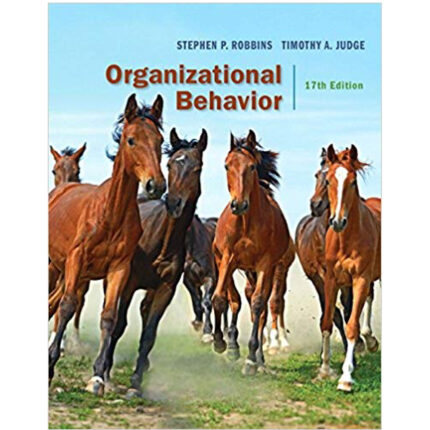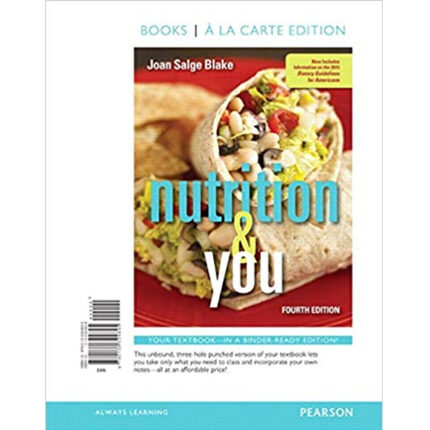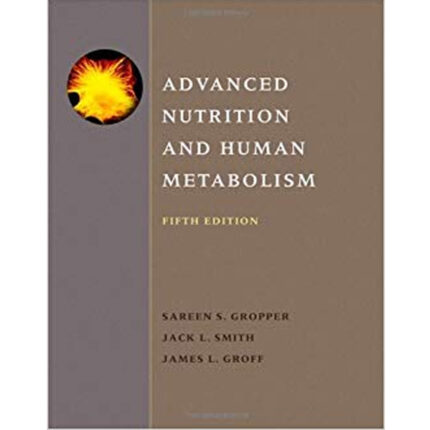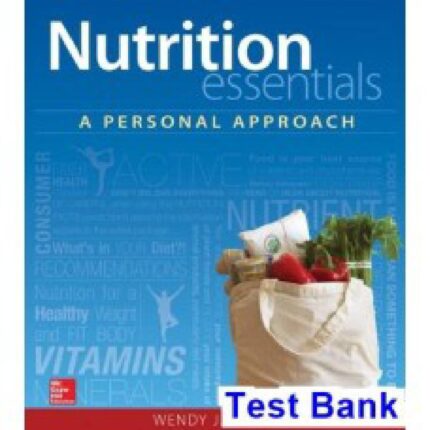Overview
Chapter 11
Nutrition, Exercise, and Sports
1) Which of the following are benefits of regular and consistent exercise?
A) enhanced heart function
B) improved balance
C) better sleep habits
D) reduced stress
E) All of these responses are correct.
Answer: E
Difficulty: 1 Easy
Section: 11.01
Topic: Physical activity and exercise
Learning Objective: 11.01 Explain the benefits of physical activity.
Bloom’s: Remember
Est Time: 0-1 minute
2) In order for an individual to maintain a regular exercise regimen it helps most if ________.
A) the exercise works only the lower legs
B) the exercise is built into a daily routine
C) you sweat profusely
D) you have a membership to a gym
Answer: B
Difficulty: 1 Easy
Section: 11.02
Topic: Physical activity and exercise
Learning Objective: 11.02 Design a fitness plan.
Bloom’s: Remember
Est Time: 0-1 minute
3) According to the Physical Activity Guidelines for Americans substantial health benefits occur when adults engage ________.
A) in occasional physical activity
B) in 150 minutes of moderate intensity exercise each week
C) in 75 minutes of moderate intensity exercise each week
D) None of these responses are correct.
Answer: B
Difficulty: 1 Easy
Section: 11.01
Topic: Physical activity and exercise
Learning Objective: 11.01 Explain the benefits of physical activity.
Bloom’s: Remember
Est Time: 0-1 minute
4) The benefit(s) of participating in different types of exercise is/are ________.
A) strengthening a variety of muscle groups
B) reducing the chances of injury
C) promoting activities that are more interesting and thus more likely to be continued
D) All of these responses are correct.
Answer: D
Difficulty: 1 Easy
Section: 11.02
Topic: Physical activity and exercise
Learning Objective: 11.01 Explain the benefits of physical activity.
Bloom’s: Remember
Est Time: 0-1 minute
5) The Borg Scale of Perceived Exertion is used to determine ________.
A) flexibility
B) muscle strength
C) exercise intensity
D) All of these responses are correct.
Answer: C
Difficulty: 1 Easy
Section: 11.02
Topic: Physical activity and exercise
Learning Objective: 11.02 Design a fitness plan.
Bloom’s: Remember
Est Time: 0-1 minute
6) Energy for muscle contraction is most directly supplied by ________.
A) amino acids
B) creatine
C) phosphocreatine
D) ATP
Answer: D
Difficulty: 1 Easy
Section: 11.03
Topic: Physical activity and exercise; Metabolism
Learning Objective: 11.03 Explain the function of ATP and PCr as muscle fuel.
Bloom’s: Remember
Est Time: 0-1 minute
7) The amount of ATP stored in a muscle cell can keep a muscle active for about ________.
A) 1-2 seconds
B) 10-30 seconds
C) 1-3 minutes
D) 1-3 hours
Answer: A
Difficulty: 1 Easy
Section: 11.03
Topic: Physical activity and exercise; Metabolism
Learning Objective: 11.03 Explain the function of ATP and PCr as muscle fuel.
Bloom’s: Remember
Est Time: 0-1 minute
8) Phosphocreatine (PCr) is an energy-rich compound found in ________ tissue.
A) adipose
B) liver
C) kidney
D) muscle
Answer: D
Difficulty: 1 Easy
Section: 11.03
Topic: Physical activity and exercise; Metabolism
Learning Objective: 11.03 Explain the function of ATP and PCr as muscle fuel.
Bloom’s: Remember
Est Time: 0-1 minute
9) At very high intensities of exercise, most of the energy the body uses is supplied by ________.
A) muscle glycogen
B) intramuscular fat
C) blood glucose
D) muscle protein
Answer: A
Difficulty: 2 Medium
Section: 11.03
Topic: Physical activity and exercise; Metabolism
Learning Objective: 11.03 Explain the function of ATP and PCr as muscle fuel.
Bloom’s: Understand
Est Time: 0-1 minute
10) When plenty of oxygen is available in the muscles, the condition is referred to as ________.
A) anaerobic
B) aerobic
C) VO2max
D) glycolytic
Answer: B
Difficulty: 1 Easy
Section: 11.03
Topic: Physical activity and exercise; Metabolism
Learning Objective: 11.03 Explain the function of ATP and PCr as muscle fuel.
Bloom’s: Remember
Est Time: 0-1 minute













Reviews
There are no reviews yet.